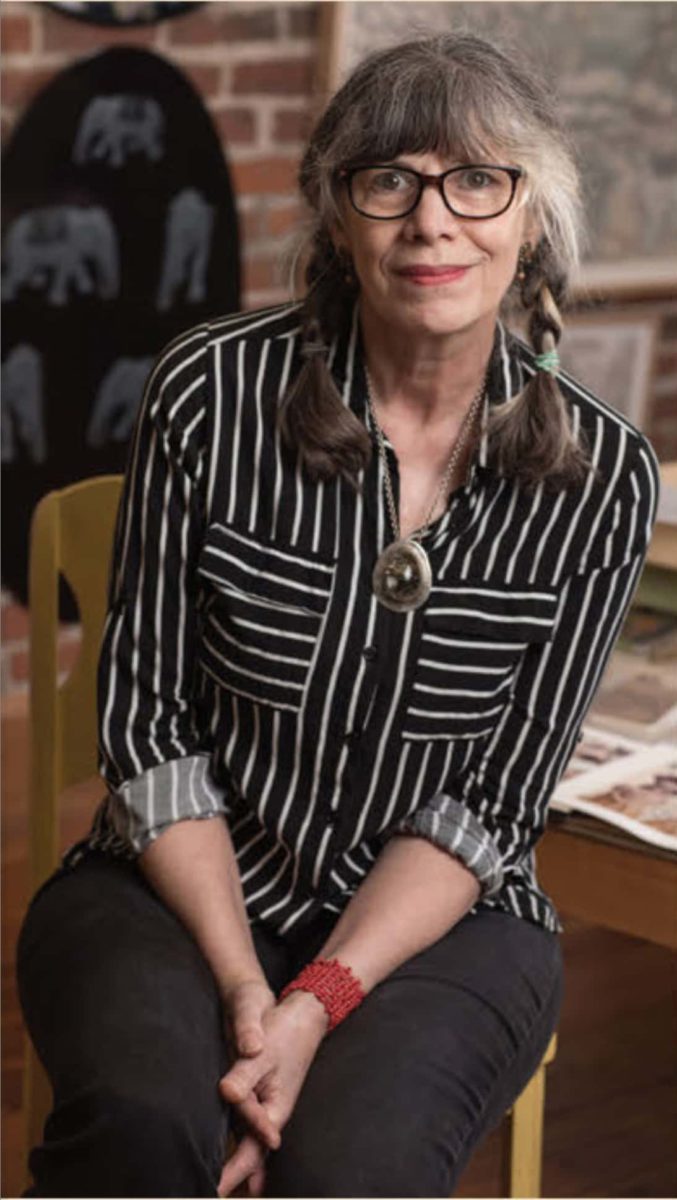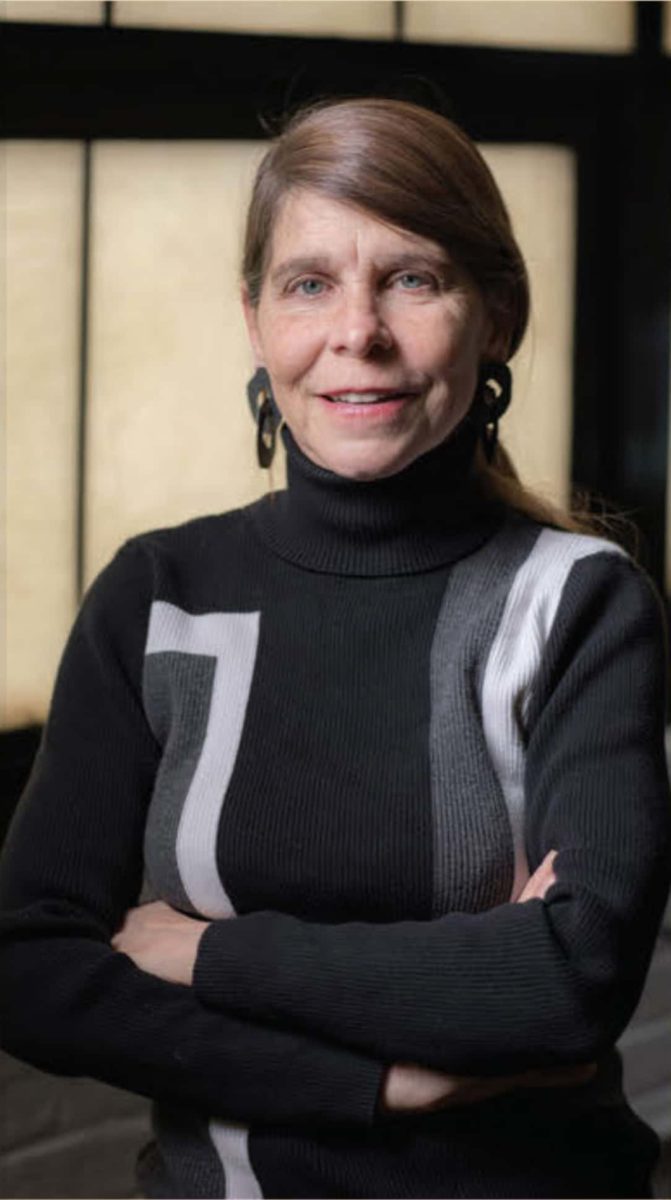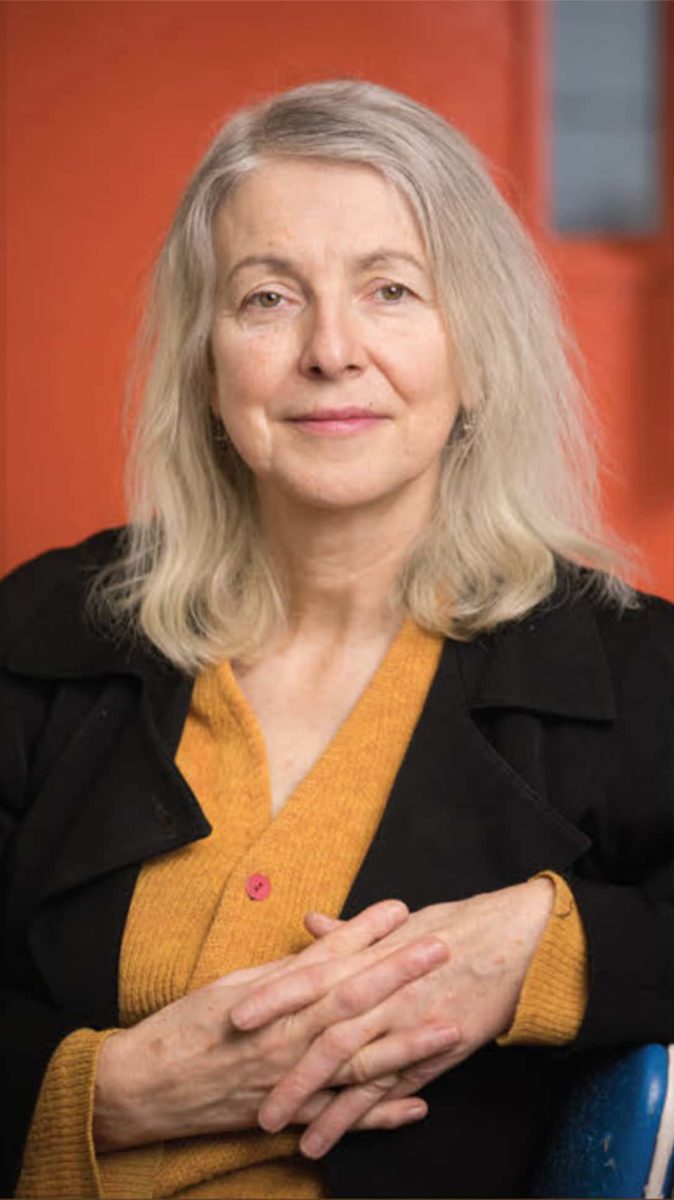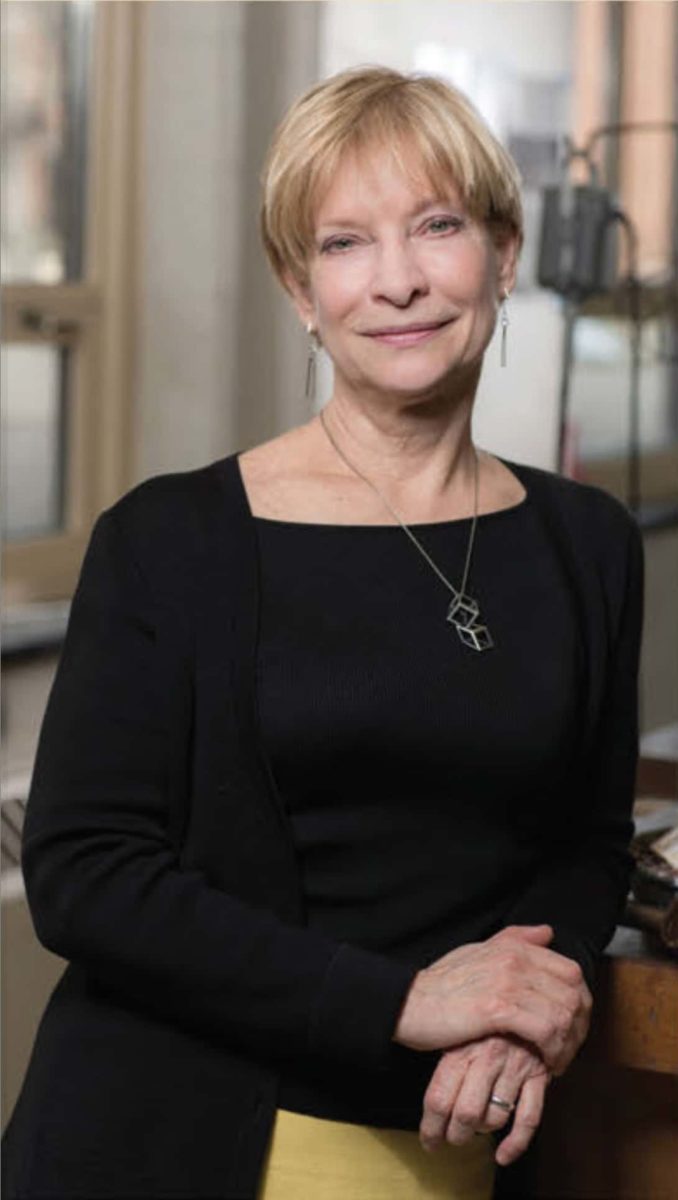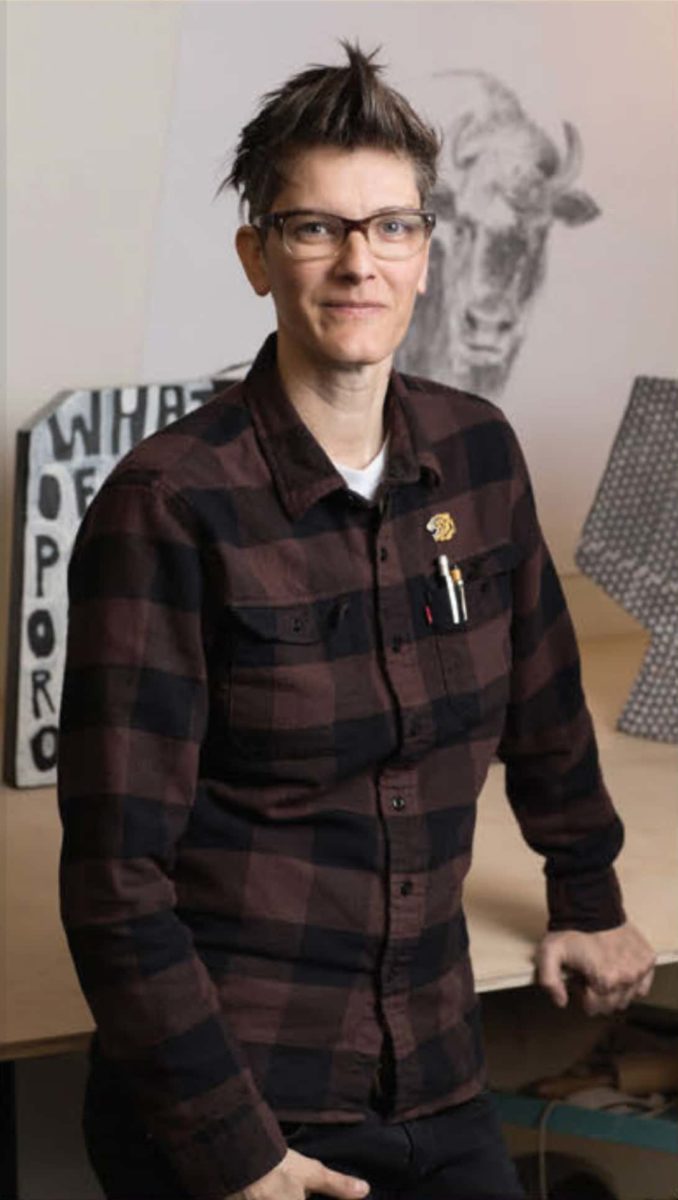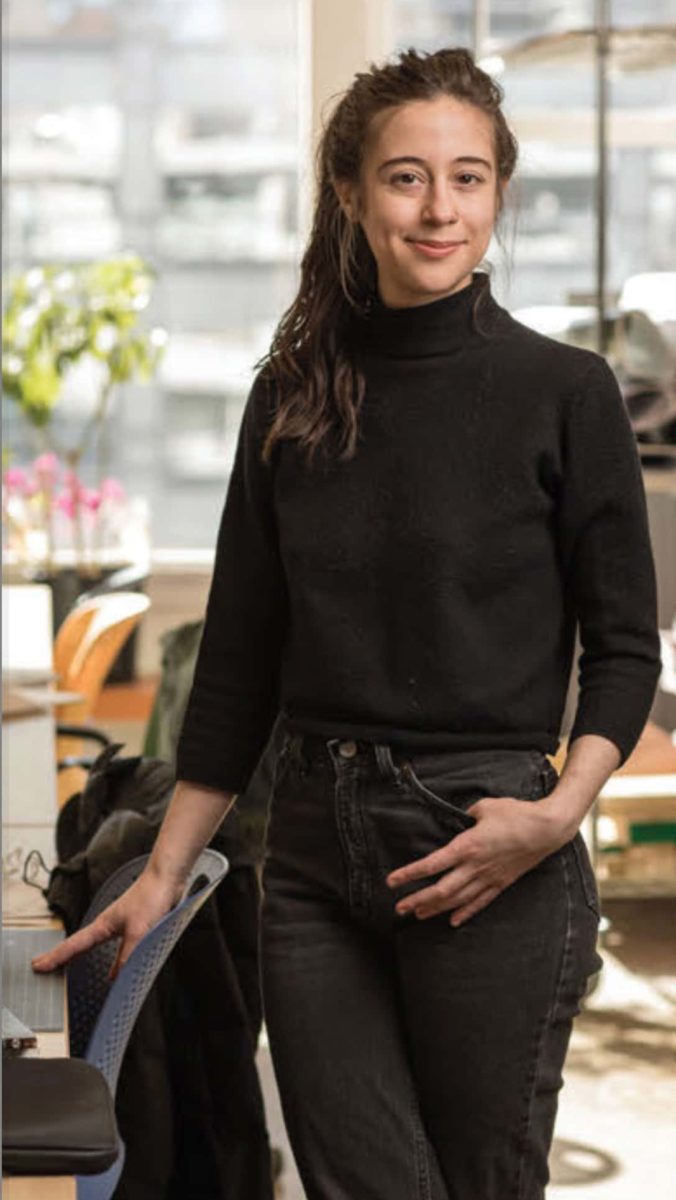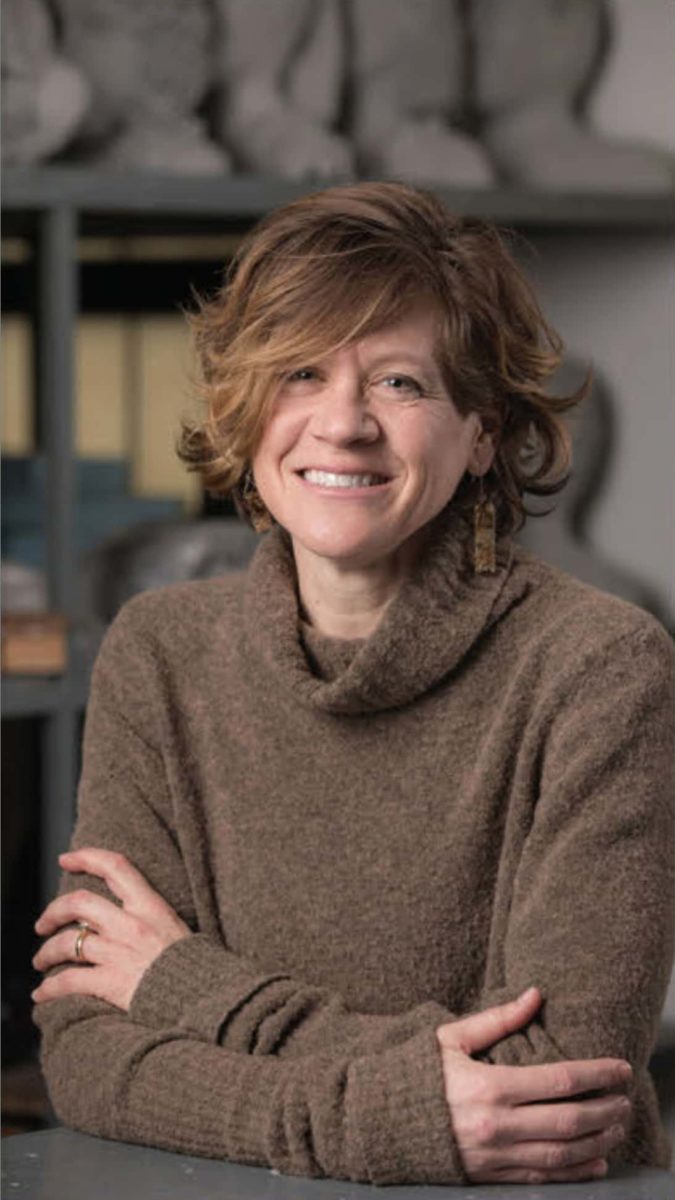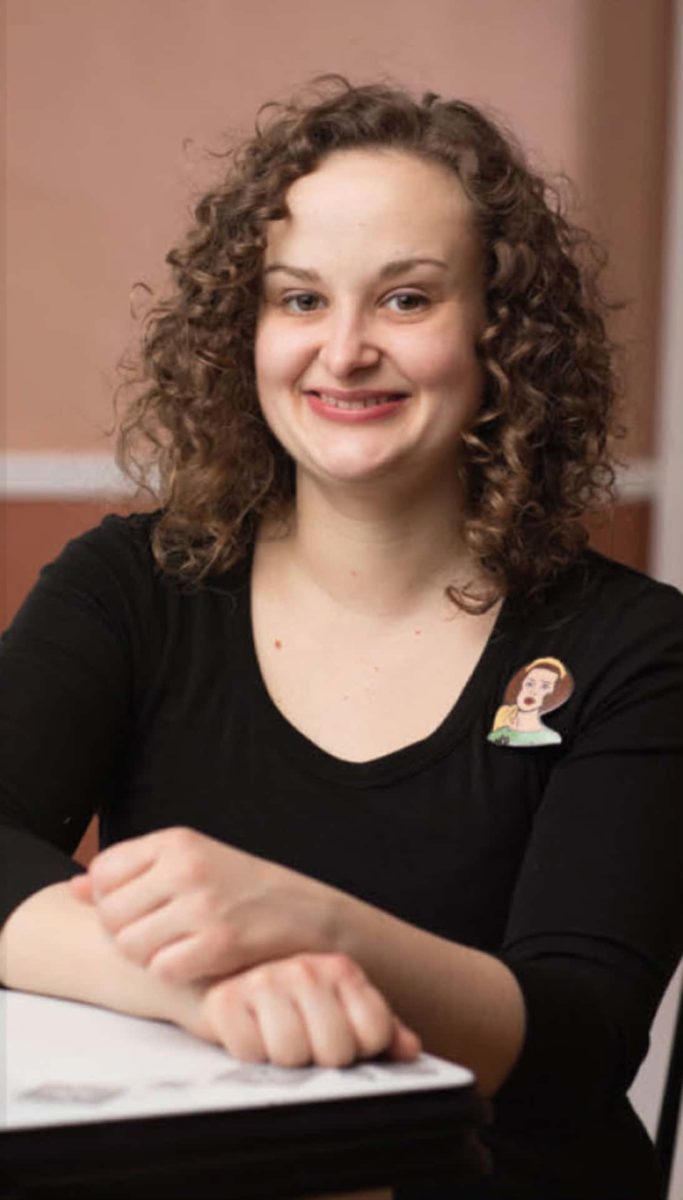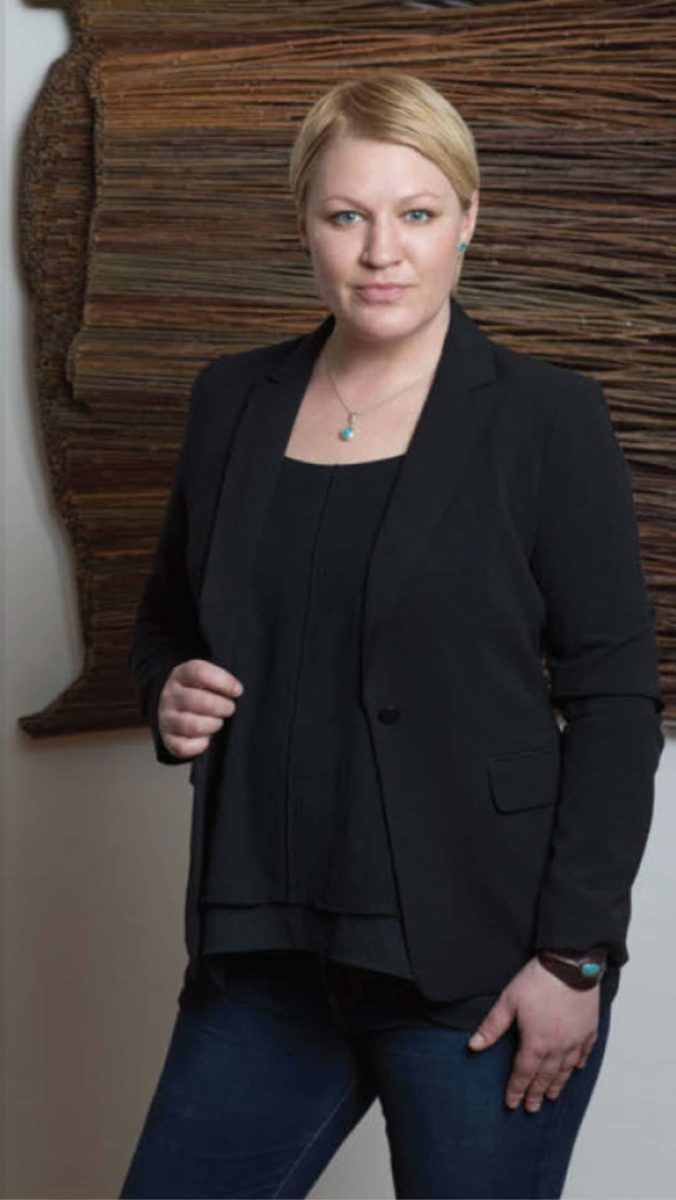2018: Ohio Women to Watch – Heavy Metal
A collaboration with the Ohio Arts Council’s Riffe Gallery in Columbus
On view, May 3 – July 7, 2018 Women to Watch Ohio – 2018, shined a spotlight on ten Ohio women artists who explore the expressive possibilities of metal, a medium more commonly associated with men. The statewide exhibition represented a rich and exciting collaboration with the Ohio Arts Council’s Riffe Gallery and followed the OAG’s 2015 partnership with the Cleveland Institute of Art.
Curators Reto Thuering from the Cleveland Museum of Art and Matt Distel from the Carnegie in greater Cincinnati nominated four Ohio women for the international Women to Watch, Heavy Metal exhibition at NMWA in Washington, DC, which opened on June 28. This group provided a starting point for the Ohio exhibition. Matt Distel deepened his engagement by serving as curator of the Columbus exhibition along with Ann Bremner, who identified six additional artists.
Artists’ portraits by Jodi Miller Photo
The artists of Women to Watch Ohio – 2018 turn the conventions of metal art inside out: transforming weight into lightness, swapping industrial associations for organic ones, and investing the most durable of materials with reminders of impermanence. Ideas overlap between some, or perhaps come close to converging before veering apart. As Matt Distell points out in his essay, this exhibition “is about more than a material.” and its strength comes not from metal but from artists.
Ann Bremner, Curator






The Opening Reception























Matt Distel, Curator
When first approached by the Ohio Advisory Group of NMWA to nominate Ohio-based artists for Women to Watch – 2018 (which features artists from states and countries in which the museum has outreach affiliates) I began with a rather benign question. What does it mean to “work in metal”? I honestly thought that I could answer that very quickly and move on, but it really became a sticking point. It all seems very straightforward, but I found that asking that question led into some interesting areas.
Upon meeting with my collaborator on this project—Reto Thüring, Chair of Modern, Contemporary, and Decorative Art, and Performing Arts and Curator of Contemporary Art at The Cleveland Museum of Art—I discovered that we were both in a similar spot. How would we go about finding artists working in metal? Even with the knowledge that we were ultimately nominating artists to be put forward for an international exhibition, we still approached the question as if we were assembling our own exhibition. If not careful, an exhibition that revolves around a material can end up expressing a certain sameness or uniformity. As we sought to avoid that, we looked for artists who manipulated metal in inventive ways or perhaps even defined metal in some compelling manner. This approach was met with encouragement from the leaders of the Ohio Advisory Group, Harriet Warm and Barbara Richter.
We wanted to find artists working with metal as a means to say something provocative beyond just bending, cutting, or shaping a material. We believe that the artists we selected for NMWA and now featured here, alongside artists assembled by Ann Bremner, have done just that. Women to Watch Ohio – 2018 is a celebration of women, a celebration of a material, and, importantly, a celebration of artists making an impact with their objects, collaborations, and voices.
Carmel Buckley
Carmel Buckley typifies the imaginative approach to materials that we initially sought. Buckley has meticulously built a varied body of work that is rooted in drawing. All her material choices lead back to mark making as the foundational element of her work. Those marks are often made with a blend of typical and non- traditional drawing tools. In a series of work begun in 2008 while on a residency in Otranto, Italy, Buckley used graphite rubbings on paper to transfer the images of metal drain covers she found on the streets. These delicate drawings subvert the weighty connotations of working in metal yet definitely still use a hunk of industrial cast iron to generate an image. Buckley has continued these investigations as she travels and where she lives and works. The drawings in this exhibition are all pulled from Columbus streets and are reflective of the variety of marks that the drain lids can provide. As a gesture, these are acts of appropriation, or at least interpretation. The drains themselves, if simply re- presented in the gallery, would function as readymades. If drawn from observation, memory, or photography, they would live closer to a still life. As Buckley has addressed them, they are documents that speak to location and signs. Close reading of the drawings reveals subtle decorative highlights that embellish the initial rubbing. This finishing touch nods toward Buckley’s desire to insert her hand into the process and allow them to be drawings that bend metal into conceptual objects.
Tracey Featherstone
Tracy Featherstone is interested in material explorations that bring forward a conversation on the tensions between traditional craft and fine art. Recent bodies of work have been influenced by her travels through southeast Asia in which material and design concerns become comingled with the issues of pragmatism and the long-term implications of making things that must occupy physical space in the real world. Featherstone has found a strategy of working that relies on discrete (or semi-discrete) objects building toward an environmental whole. These objects, while presented as sculpture or wall works, are decidedly not precious They are immediate in a way that makes them desirable, begging to be touched. Featherstone calls them “rugs” in their titles, though obviously a “rug” made of paper, paint, and aluminum is not tremendously practical. Yet somehow their backstory of useful objects comes through in more intuitive ways: you can imagine their function. The metal components have only recently entered the work as a choice that speaks to simply taking materials at hand which can then also inform design choices. Once completed, Featherstone’s rugs occupy an ambiguous space between craft, sculpture, and painting. Further complicating her object’s designations, Featherstone has also begun to introduce fake and live plants to her installations, merging the natural, built, and manufactured worlds. In this way, each new material becomes dependent on the last, creating an ecosystem that supports art objects.
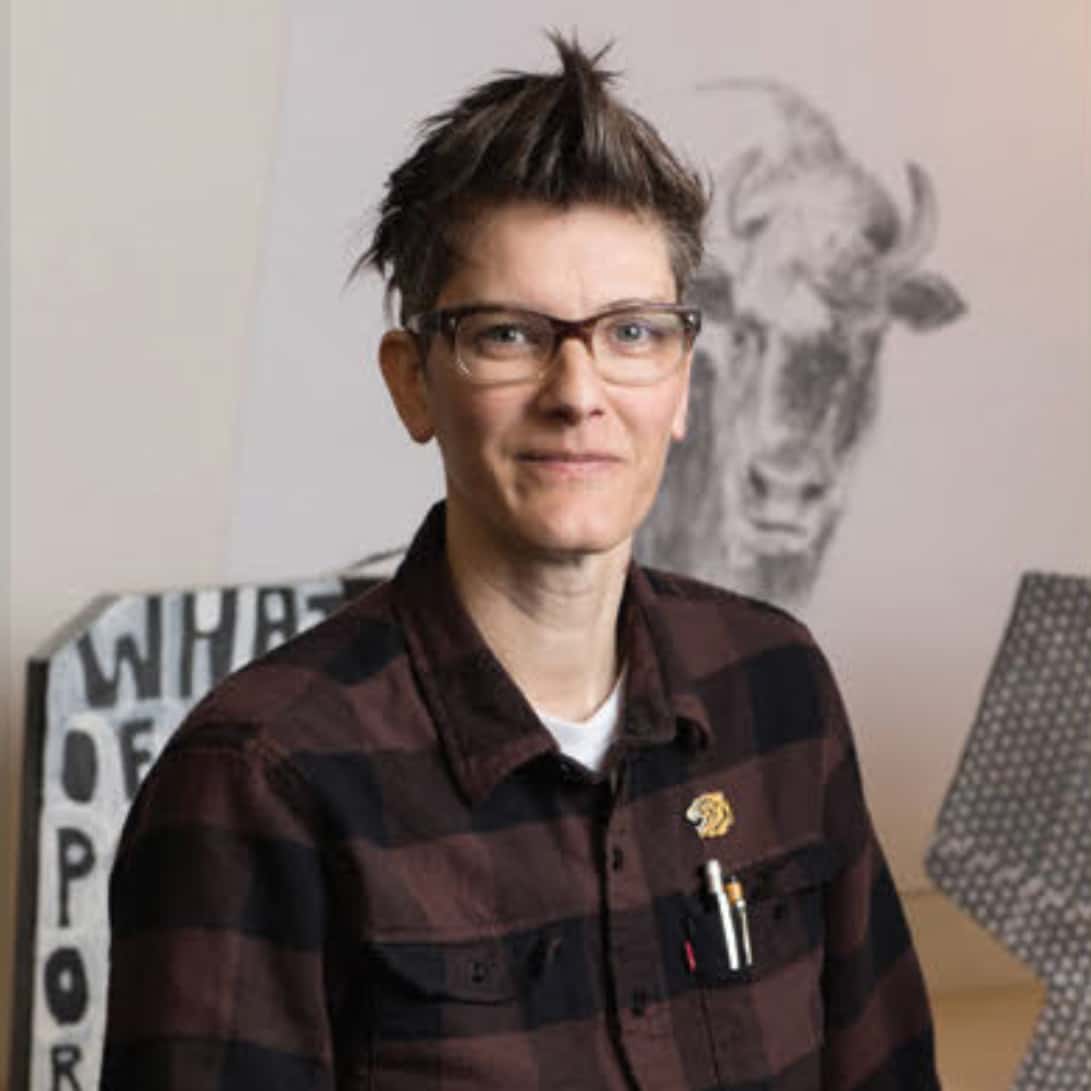
Welly Fletcher
Welly Fletcher similarly builds objects that turn on material choices with the viewer’s body as a reference point. Fletcher’s latest work furthers her interest in objects that simultaneously provide protection and space for contemplation. By using the imagery of masks and shields, the artist calls on centuries of metaphorical weight to examine the transformative power of being safe, hidden, or occupying another body. Many of Fletcher’s works are pitched on a slant that the artist describes as a literal manifestation of queer politics. That slant also serves another purpose. It creates a space, real or implied, behind the object that requires the viewer to enter and thereby complete the function of the sculpture. Fletcher mixes metal with other softer or more natural, warmer materials, but the manipulation of metal is commonly the support structure on which the deeper content of the work hangs.
Leila Khoury
Leila Khoury also employs metal as the support for objects infused with cultural memory. Specifically, Khoury draws on her Syrian heritage and imagery from that country’s cultural history. The ongoing conflict in Syria has resulted in the destruction and erasure of many locations of importance both personal and public. In 2016, Khoury constructed a large-scale installation that recreated motifs and patterns from an Aleppo bathhouse. The cast concrete elements from that installation are reconfigured by Khoury to generate new objects and forms that continue to explore the roles of grief and nostalgia in creating individual and collective identities. Khoury’s interests in architecture and architectural preservation serve as a basis for her research and also inform the structures that she welds to hold the physical symbols of her disappearing cultural memories. Khoury’s work was selected by the National Museum of Women in the Arts as the representative from Ohio for Heavy Metal – Women to Watch 2018. Her inclusion there continues the important conversation about the role of the individual in increasingly complex global politics. Women to Watch Ohio – 2018 is about more than a material. It transforms metal into a vehicle for ideas that themselves have transformative power. The ideas explored are big and small, but all have distinct weight, and the insistent voices behind them ensure that they can be heard.
Ann Bremner, Curator
Since late-20th century, discussions in art have frequently employed the term “postmedia” in at least two senses. One involves challenges to the once-dominant institutions of mass media communications. The other describes a loosening of artists’ allegiances to specific materials, whether paint or metal, photography or found objects. That latter sense sprang to my mind when began to research artists whose works might deliver a complicated and intriguing picture of metal work today. Although interested in artists for whom metal is one material among many, I wanted to explore especially the ways in which artists committed to using metal are expanding possibilities, challenging expectations, and critiquing traditions. In particular, I wanted to investigate contemporary artists’ takes on two extremes of metal working, both with extensive lineages: public art and jewelry.
Susan Ewing
Susan R. Ewing moves deftly between those extremes in scale and sometimes in temperament. Designed specifically for its plaza location adjacent to the Kent State University School of Journalism, StarSphere 2010 is a stainless-steel form over 11 feet tall that contains the space of a starburst inside a sphere. This monumental public artwork recalls the symbolic associations of stars with illumination and with liberty as reminders of the freedom of the press guaranteed in the First Amendment to the United States Constitution. Yet, as Ewing showed me, its form derived, in part, from designs for miniature pieces, including jewelry, she developed during a two- year residency in Prague. She saw stars on buildings throughout the city and found herself pondering their connotations of freedom and hope but also of loss and sorrow. “Jewelry is public art, too,” she told me. Memento Mori: Form with Fungus (Blackening Polypore), completed in 2017, reveals more improvisational and personal facets of Ewing’s art. Cast in bronze (which traditionally signals immutable permanence) and embellished with flakes of rust from her car, Form with Fungus offers an evocative meditation on nature’s cycles of life, death, and decay and on the grief of personal and generational losses.
Olga Ziemska
In Olga Ziemska’s outdoor public sculptures such as Mind’s Eye (2015) in RespirArt Sculpture Park in Italy, pieces of hand-bent metal become the lines with which she draws forms in space. These linear structures support the locally reclaimed wood with which she fills those forms. The interplay of the natural wood and industrial metal along with the figurative elements of Mind’s Eye reinforce the questions about human interactions with the environment that hover around many of Ziemska’s sculptures. For Feather Point (2017) in Dublin, Ohio, the artist replicated the fallen branches collected on site in steel that carefully conveys the subtle marks and textures of the wood. The metal preserves a sense of the wood’s vulnerability while increasing the sculpture’s durability, and the shimmering, reflective steel seems light and airy, despite its heft and strength. Inspiration: The Moon, a new wall installation, addresses another ongoing focus of Ziemska’s work: the impulse to make invisible forces, such as magnetism, visible. Although metal may not always be the primary medium in her art, she turns to it deliberately and inventively when it provides essential qualities that a specific project requires.
Marissa Saneholtz
Marissa Saneholtz would doubtless agree with Susan Ewing that jewelry is public art. Saneholtz’s copper enamel brooches, necklaces, and earrings are as fertile ground for social critique and commentary as any painter’s canvas or activist’s poster. Images from sewing patterns and teenage romance comics of the 1950s and 1960s shape and populate her jewelry designs, and Saneholtz undercuts their stereotypes with pointed satire. She is fascinated and outraged by how such imagery simultaneously reflected and defined the attitudes that curtailed women’s lives in past generations. And she is determined to fight the perniciously lasting effects of sexism today. In recent works such as The traditions were hers to change (2017), Saneholtz examines another tradition of ornamentation: tattoos. From research on “tattooed ladies” of the past she determined that some women took up this profession because it afforded them a better living and greater independence than most alternatives. In at least some instances, Saneholtz is basing the tattoos her jewelry figures sport on those of historical figures.
Kelley Malec-Kosak
Kelly Malec-Kosak’s Pearl Cluster Ring (2017) steps away from the references to women’s identity and experience that characterize much of her previous metal work and jewelry. The texture of the hand-worked silver provides a surprisingly organic base for the pearl cluster, suggesting something that might be growing naturally underground or underwater. The recent pendants and brooches of Shaped Space (2018) and Hard/Soft (2018) are even more of a departure. A friend and mentor once challenged her to move outside the comfort zone of metal working by abandoning that medium for at least a year. She opted instead for looking and drawing, finding the forms of the spaces between the figures in photographs of her children, then sewing those abstract forms out of fabric. She’s been querying what those in-between spaces might metaphorically suggest about relationships. In these new projects, she continues to contemplate the liminal shapes while experimenting with ways to integrate metal constructions with the fabric forms.
Carol Boram-Hays
Carol Boram-Hays’ sculptures confront the ambivalence that colors attitudes toward the industrial boom – with its legacy of pollution and overdevelopment – and the post industrial bust that followed: with its legacy of lost jobs and rusting relicts. The reclaimed rebar and concrete in Eviscerate (2017) and other sculptures clearly bear signs of their past use. Nothing in Whoosh (2017) disguises the previous identity of its repurposed steel as ductwork and piping. But without denying this industrial presence, many of the rebar and concrete sculptures also have a strongly organic or figurative character. Eviscerate vividly evokes violations delivered by and to human beings. Whoosh and Eviscerate, created in the aftermath of the 2016 presidential election, also reverberate with emotions the artist experienced then: a sense of possibilities going up in smoke, perhaps, and fears of violence that might be done to protections and freedoms she values.
Mary Jo Bole
Mary Jo Bole is a polymath or renaissance woman of an artist. Her academic degrees are in ceramics, but metals have figured in her sculptures and installations for years, alone or in tandem with ceramics. Glass has made appearances, too, and her myriad projects also have involved printmaking, drawing, artist’s books, filmmaking, and lots of research. Bole has also made a practice of finding or creating residencies where she can work side. by-side with highly skilled technicians and artisans as they cast her metal sculptures or print her books to her exacting specifications. The metal works in this show come from her ongoing engagement with family history, funerary and commemorative practices, and what she refers to as “the impermanence of permanence. We Will Go to Nature (2014) is a memento mori where tiny skulls encircle images of flowers and hands, which are frequently depicted on tombstones. Although many of the flowers are blooming, others are slipping into decay, just as they do when left on graves. Decay also surrounds the pile of necklaces in Goodbye (2008). In each the strength and permanence implied by the metal is undermined by the dissolving decay.
The artists of Women to Watch Ohio – 2018 turn the conventions of metal art inside out: transforming weight into lightness, swapping industrial associations for organic ones, and investing the most durable of materials with reminders of impermanence. Ideas overlap between some, or perhaps come close to converging before veering apart. As Matt Distell points out in his essay, this exhibition “is about more than a material.” and its strength comes not from metal but from artists.
Ann Bremner, Curator
Our 2018 Sponsors


